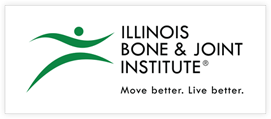Autograft Options for ACL Reconstruction
The ACL, anterior cruciate ligament, is essential to knee stabilization, and is one of the most common knee injuries among athletes. Although not all ACL injuries require surgery, ACL reconstruction is a common procedure used to repair the ligament and stabilize the knee when surgery is indicated.
When having ACL reconstruction surgery, you have a choice in treatment. The first is deciding whether to use an autograft (patient’s own tissue) or an allograft (cadaveric tissue) for the surgery. Talking with your doctor and understanding the differences between the two can help you make an informed choice.
If you choose to use an autograft, there are several options for the replacement tissue. Tissue may be taken from the patellar tendon, hamstring tendon, or quadriceps tendon.
Patellar Tendon:
The patellar tendon is used extensively in ACL reconstruction and has been known as the “gold standard”. Often, this option is referenced as bone-patellar tendon-bone (BPTB) because it uses the middle third of the patellar tendon and bony attachments to replace the injured ACL. The patellar tendon is easily accessible and provides excellent strength post-surgery. It has excellent long-term results and because of the bone plugs, it heals faster than soft tissue only autografts.
Hamstring Tendon:
Using the hamstring tendon to replace the injured ACL is also a frequently used option. The hamstring tendon is obtained through small incisions just below the knee. This option provides good strength to the knee post surgery and has low revision rates. Studies also show that there is lower incidence of developing arthritis when using the hamstring tendon.
Quadriceps Tendon:
The quadriceps tendon is a thick tissue located above the patella or kneecap. During reconstruction, a small incision is made over the knee and part of the tendon is taken to prepare the new ACL graft. Although using the quadriceps tendon is less common, it has shown similar functional outcomes and stability outcomes compared with patellar and hamstring autografts.2
There are many factors to consider when discussing which option is best for an autograft. For example, is this the first ACL tear? Are you an athlete? Are you a female athlete that relies heavily on your quadriceps? Is the goal to return to sports or simply to regain normal function of the knee? Every patient is different and considering the individual, their goals, and their unique circumstances will help determine the best autograft option.
Ronak Patel, MD is a Board-Certified Orthopaedic Surgeon specializing in Sports Medicine injuries for teens and adults in Chicagoland and NW Indiana. Dr. Ronak Patel has performed thousands of successful ACL reconstructions allowing a quicker rehabilitation, earlier weight-bearing and often doesn’t require bracing after ACL reconstruction. Dr. Patel utilizes an evidence-based, efficient rehabilitation program to allow athletes of all levels (high school, collegiate, and professional) get back to competing at the highest level.
https://pubmed.ncbi.nlm.nih.gov/30790526/
At a Glance
Ronak M. Patel M.D.
- Double Board-Certified, Fellowship-Trained Orthopaedic Surgeon
- Past Team Physician to the Cavaliers (NBA), Browns (NFL) and Guardians (MLB)
- Published over 49 publications and 10 book chapters
- Learn more

